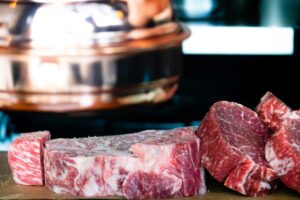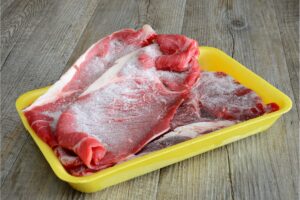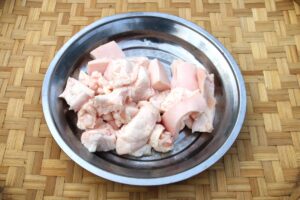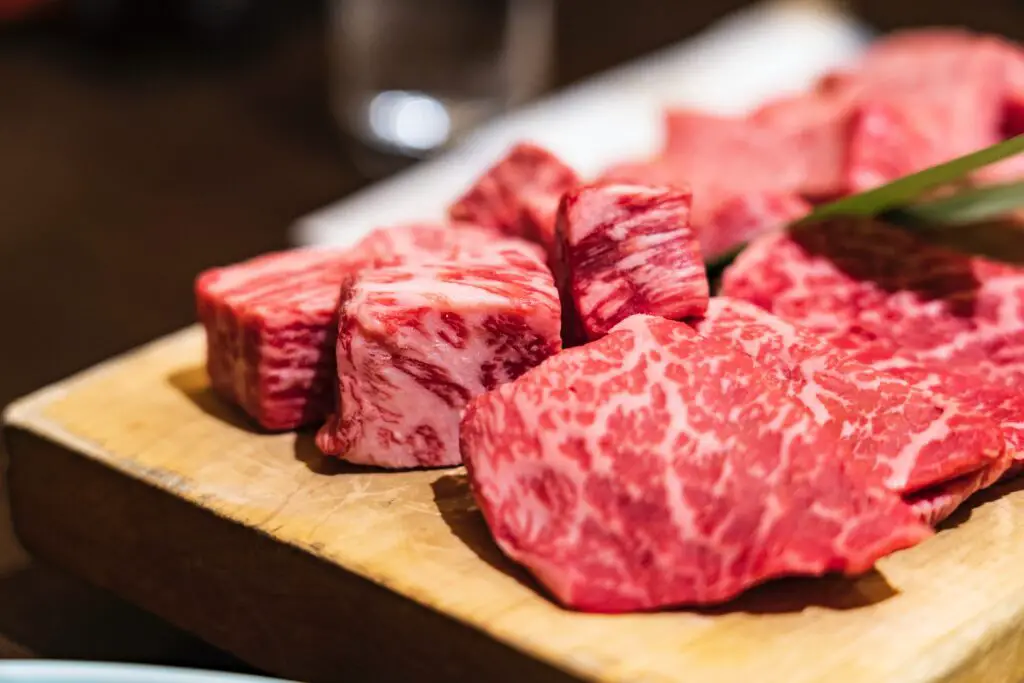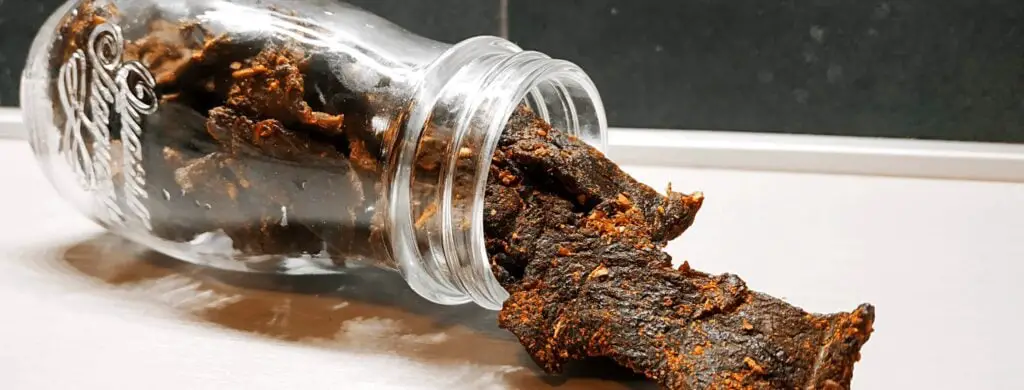
Making homemade beef jerky is a simple two-step process: Marinate, then dehydrate. You can create your own marinade within minutes. Dehydration can be achieved via slow cooking in a conventional oven, or in a dehydrator. Easy Peasy.
I had some leftover beef tenderloin in the fridge, so I checked out some recipes for inspiration, and created a tasty tenderloin beef jerky recipe.
I also compiled a list of essential tips and tricks to make THE perfect homemade beef jerky.
Keep Reading to learn how I did it!
How to Make Homemade Beef Jerky In Your Oven
Ingredients:
- 1,5 – 2 lbs lean beef
- 0,5 cup soy sauce
- 3 tablespoons worcestershire sauce
- 2 cloves garlic, minced
- 2 teaspoons freshly ground black pepper
- 1 tablespoon smoked paprika
- 0,5 tablespoon honey
Step 1: Preparation
- Trim excess fat from meat, put the meat into freezer for 30-40 minutes
- Cut meat into equally thick slices between 1/8 inch (4 mm) and 1/4 inch (6mm)
- Create the marinade for beef jerky by combining soy sauce, worcestershire sauce, garlic, pepper, smoked paprika and honey in a large bowl
- Place meat into marinade slice by slice
- Marinate meat for 3 hours
Step 2: Cooking
- Remove meat from marinade, pat dry with paper towels
- Preheat oven to 175°F (80°C)
- Place meat onto an oven rack. They can touch but not overlap!
- Place a baking sheet below rack to catch drippings and avoid mess
- Cook / dehydrate your beef for approximately 3 – 4 hours depending on the thickness. Check meat after the first hour, then every 30 minutes.
- Remove when meat is still slightly pliable. If it breaks you cooked for too long
- Tip: Cut the jerky with scissors for nice shapes
- Done!
Best Meat For Beef Jerky
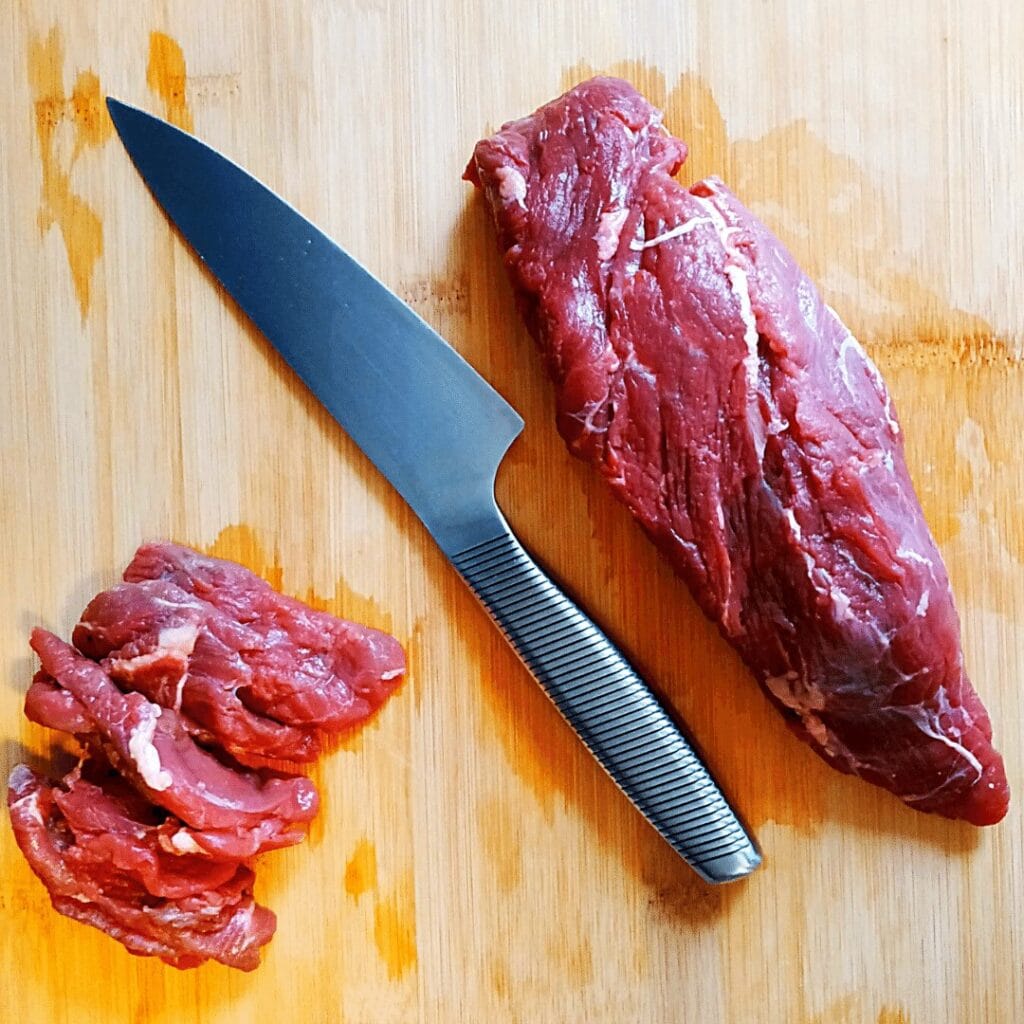
Majority of the people use one of the following cuts to make homemade beef jerky:
- Flank Steak
- Eye of Round
- Top or Bottom Round
- Filet Mignon or Tenderloin (Surprisingly!)
In this order.
The only thing you really need to keep in mind is to select a cut of beef that is as lean as possible. You will have to trim off any excess fat anyway, so there is no reason to pay for it.
There are several reasons why you need a lean cut to make homemade beef jerky.
- Shelf life: Fat goes rancid. If you plan to keep your beef jerky for weeks then you should avoid any kind of fat deposits. The leaner and tougher the meat, the longer it keeps (in the fridge or otherwise)
- Cooking: The cooking process is really mostly a dehydrating process. The fatty bits will have a different texture after cooking.
If you want, you can check out my previous article about the best meat for beef jerky where I list a few options, and where to buy them.
How To Slice Meat For Jerky
You should slice meat for jerky against the grain for a more tender experience. Most store bought jerky is also sliced against the grain.
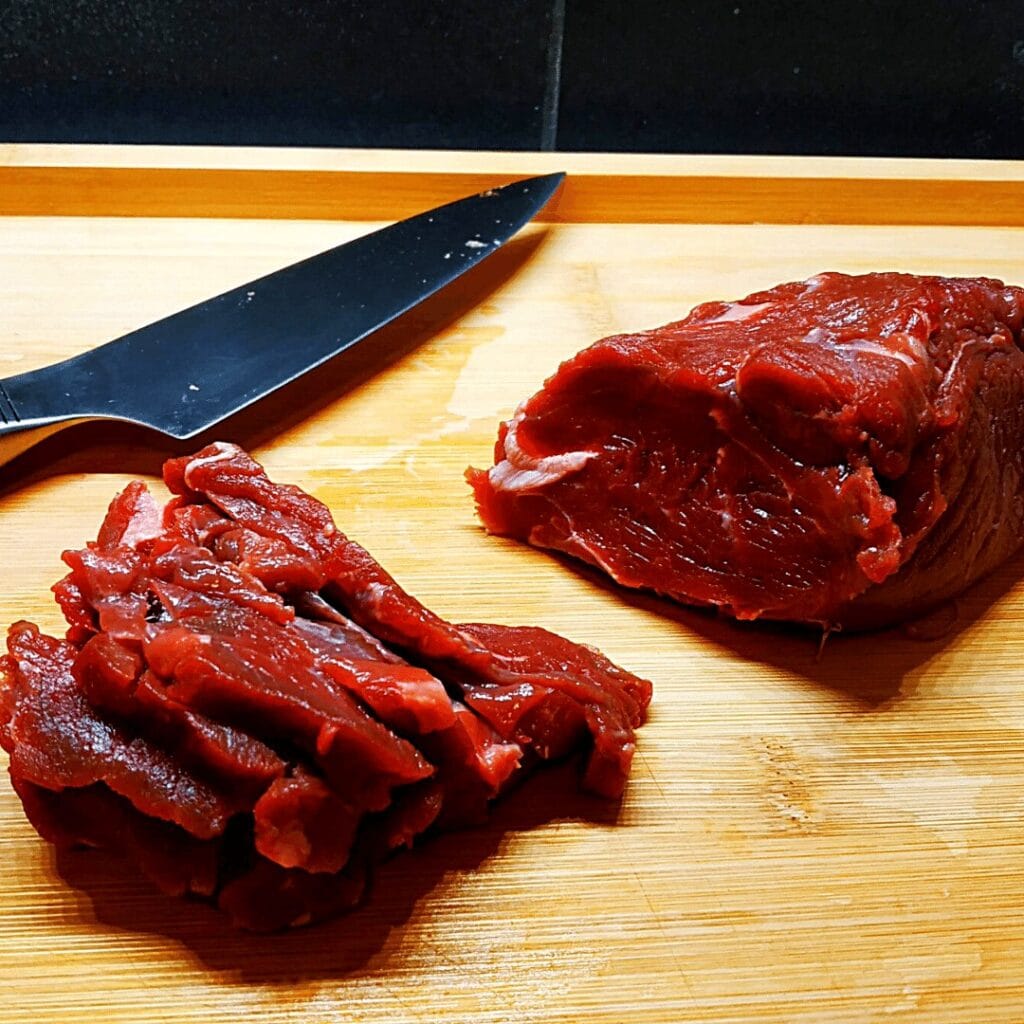
The required width is 1/8 inches (3 mm) thick, but you can go as high as 1/4 inch (6 mm). Do not cut any thicker than this, it won’t work out. If you cut the strips too thin, then they will dry out while cooking.
There are two schools of thought, and neither is “the correct way”. You can either slice against the grain, or with the grain.
If you slice with the grain then you will have long, “rubbery” strings that are easily separable, but harder to chew. If you are a slow nibbler type of person, then you might actually enjoy the challenge.
Tip: Don’t sleep on your butcher! They are usually glad to help, and have the proper tools (like a commercial meat slicer). Tell them you want to make homemade beef jerky, so they can pre-cut the meat for you!
Beef Tenderloin Jerky
Since I made an article about reverse searing filet mignon not so long ago, I decided to try to make Beef Tenderloin Jerky from the leftover raw meat.
Does Beef Tenderloin Make Good Jerky?
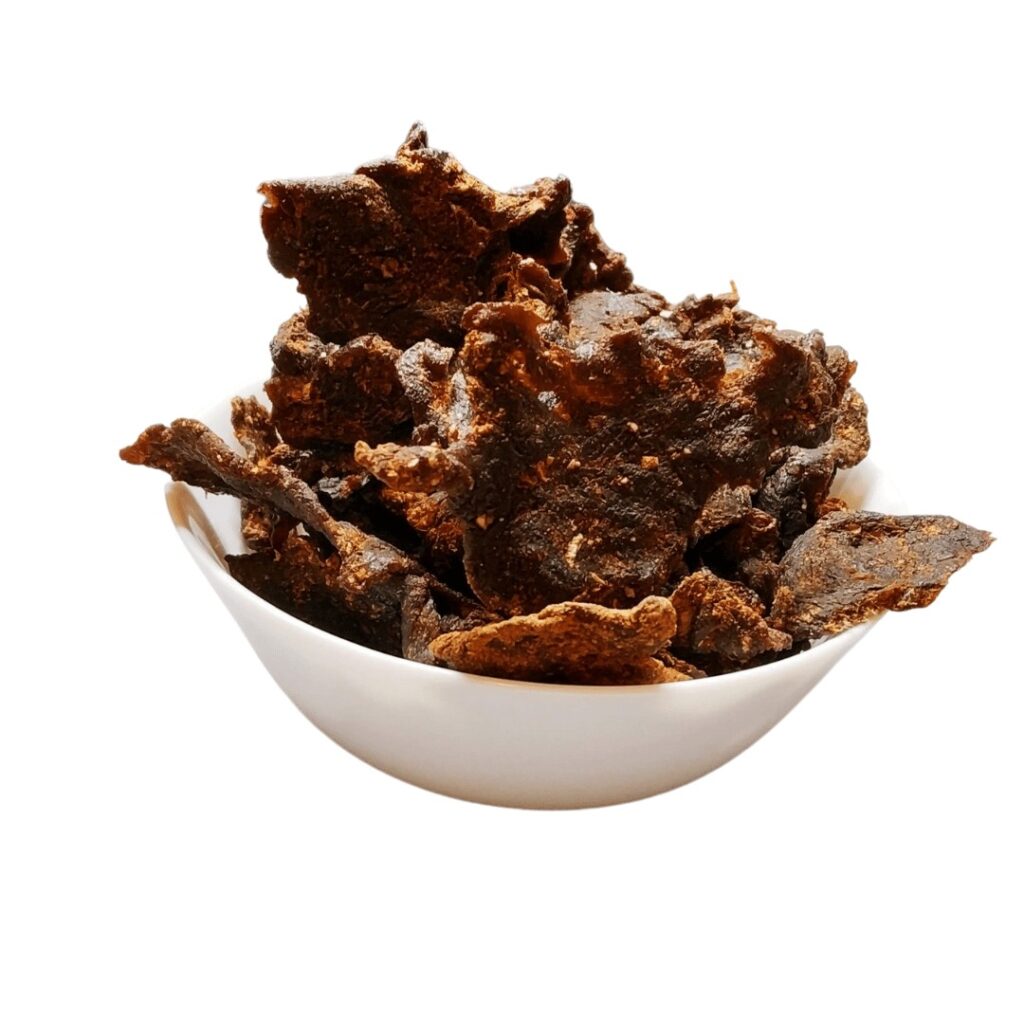
You will be the final judge whether the jerky made in this article looks good or not, but in my opinion YES, beef tenderloin does make good jerky. The taste and texture is wonderful, and the meat is lean enough to have a long shelf life.
The only downside is its price.
How Much Jerky From a Pound of Beef
Cooking removes around 30% of water. I assumed that there will be even less moisture remaining in my homemade jerky, since the dehydrating (cooking) process is so long.
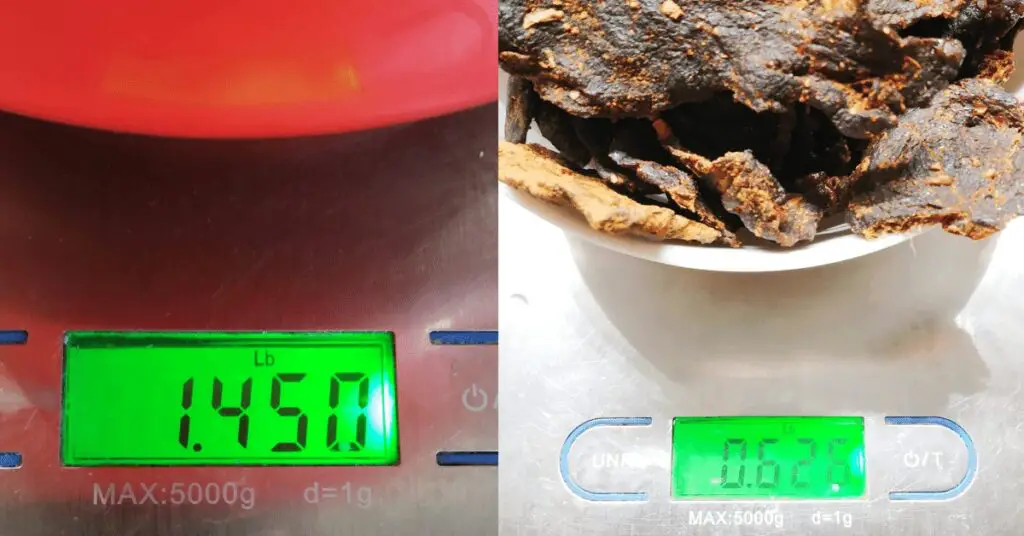
Check out the before and after weights of the tenderloin I used. The raw meat totaled 1.450 lbs (657 grams). By the time I finished cooking my homemade beef jerky the remaining weight was only 0.626 lbs (284 grams).
Extrapolating from this, 1 lbs of raw beef yields 0.43 lbs, or approximately 7 ounces (195 grams) of finished homemade beef jerky. If you cook it for less time, then the meat retains more moisture, resulting in a higher weight.
Quick maths: assume end result is half of the starting raw meat weight, 1 lbs of beef yields 0.5 lbs of jerky
Best Marinade For Beef Jerky
The best jerky marinade that everyone seems to use is a peppery mix of the following ingredients:
- Worcestershire Sauce
- Soy Sauce
- Smoked Paprika, or Paprika and liquid smoke
- Salt, freshly ground black pepper, onion powder and garlic powder
Some might prefer a sweeter jerky flavor. If this is you, then add some honey, molasses, maple syrup or sugar to the marinade for beef jerky. Even if you want to keep the flavor more savory, a little bit of sweetness does wonders to counteract the peppery taste.
If you prefer a peppery punch, then add more freshly ground black pepper to the meat once it is laid out on your rack. I found this unnecessary.
To make hot/spicy beef jerky you should add red pepper flakes either as they cook, or straight into the marinade. I prefer the latter.
Use my recipe below to make marinade for beef jerky without liquid smoke,
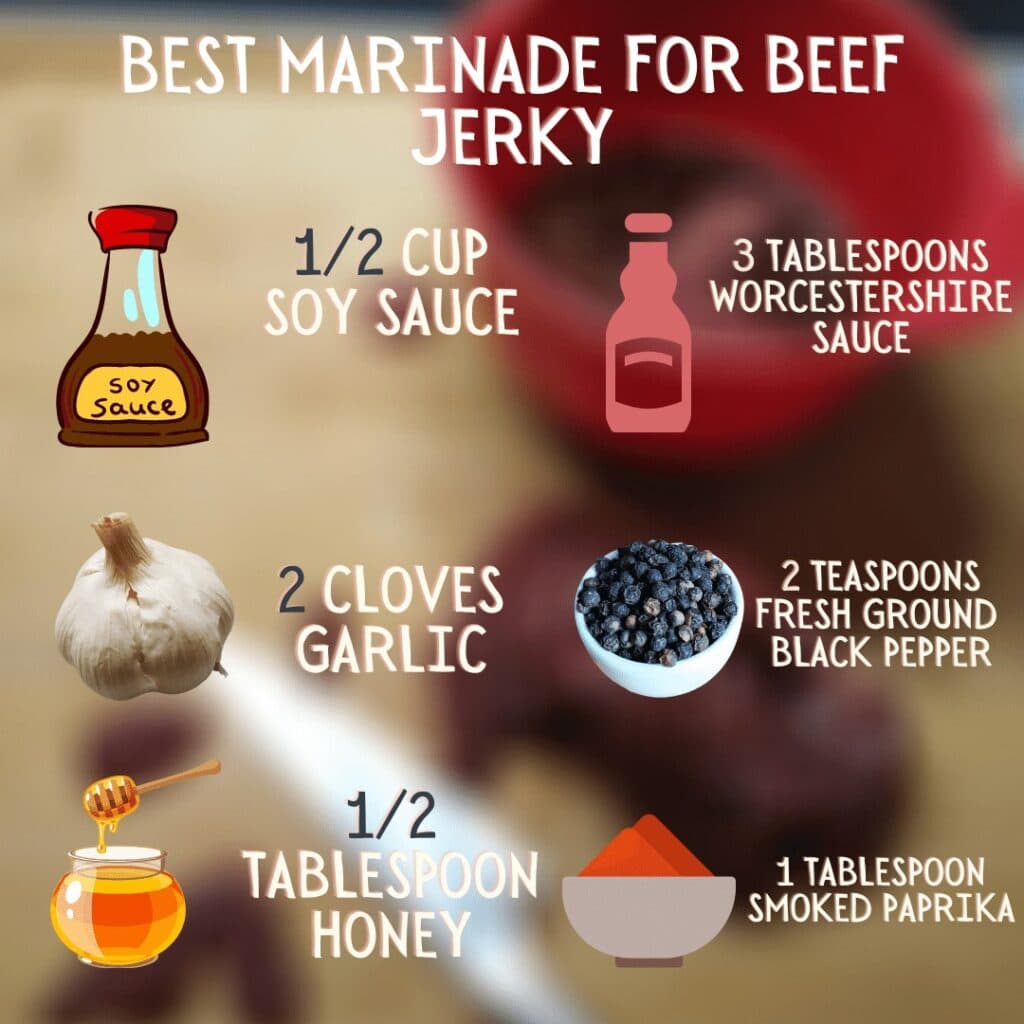
I used the following mixture:
- 1/2 cup soy sauce
- 3 tablespoons Worcestershire Sauce
- 2 cloves of garlic
- 2 teaspoons of freshly ground black pepper
- 1 tablespoon of smoked paprika
- 1/2 tablespoon of honey
I did not add any extra salt, since soy sauce is very salty. The end result was perfect!
How to Store Beef Jerky
This depends on a few things, but properly prepared homemade beef jerky should have a shelf life of around 2 weeks at room temperature. To be safe I recommend storing your jerky in the fridge, unless you plan on eating it within a couple of days.
Cooking homemade beef jerky was surpisingly easy, and I will definitely make more in the future. And if you are in the mood for more cooking, then check out my article about reverse searing filet mignon steak!



